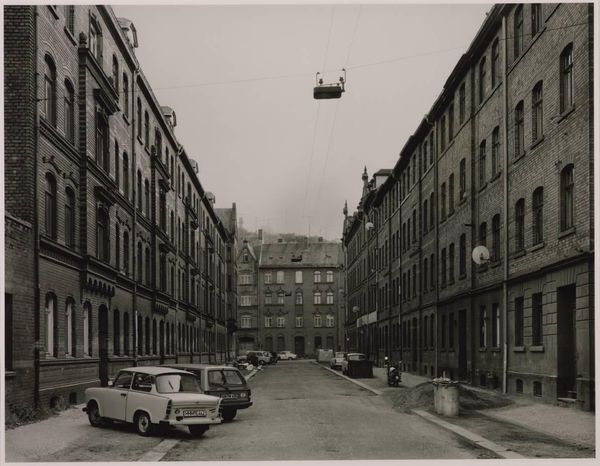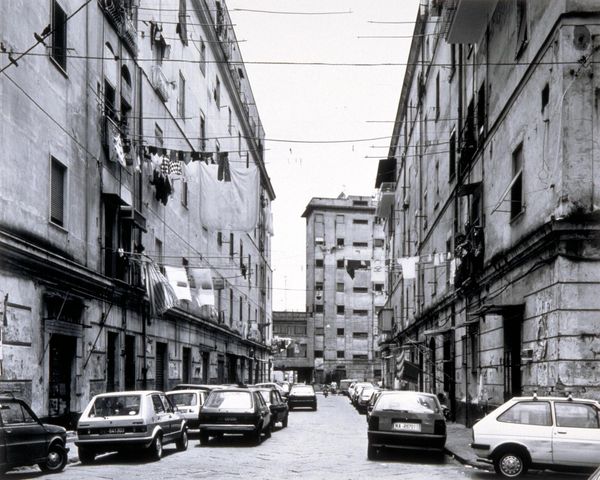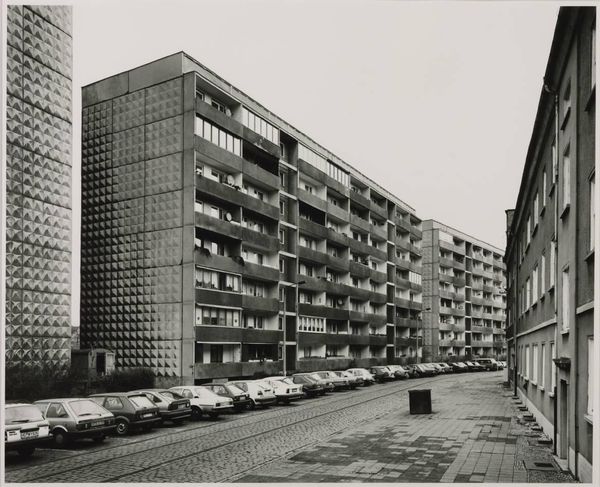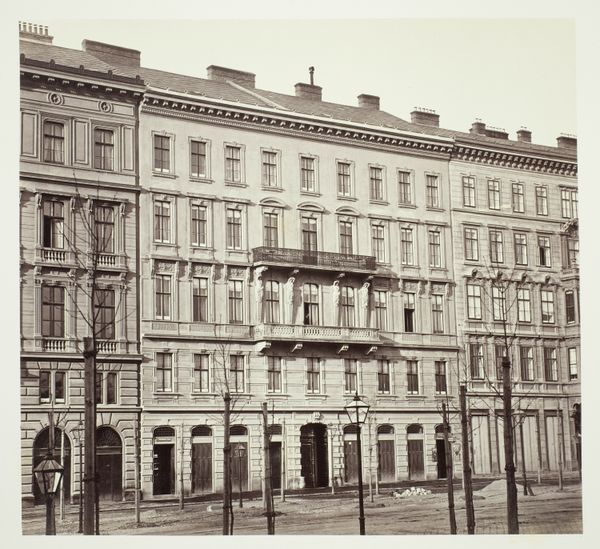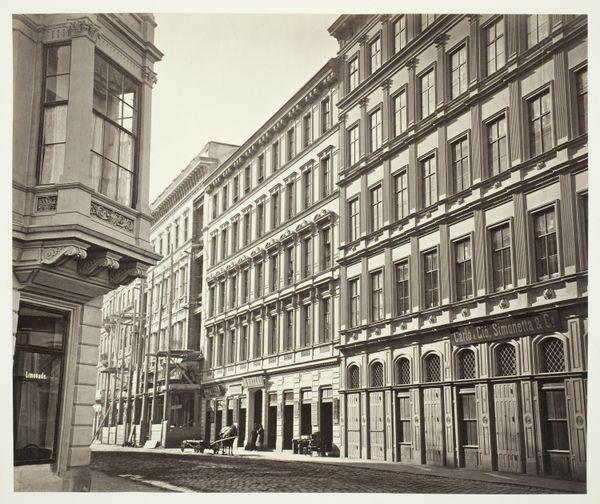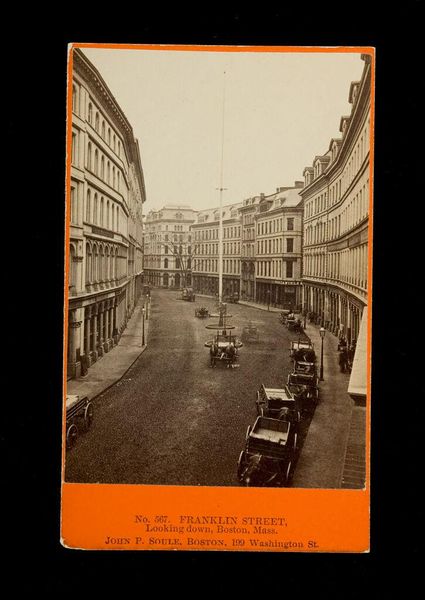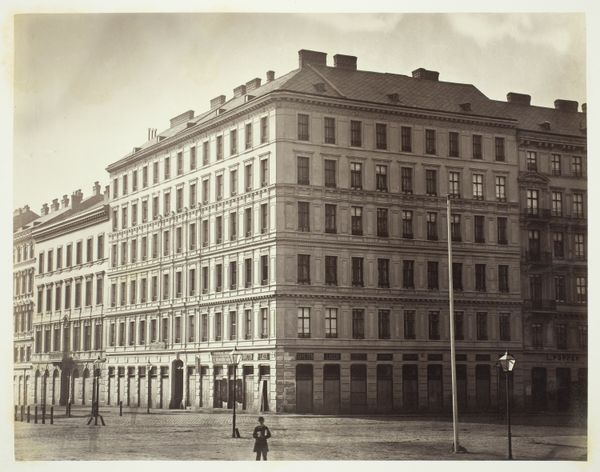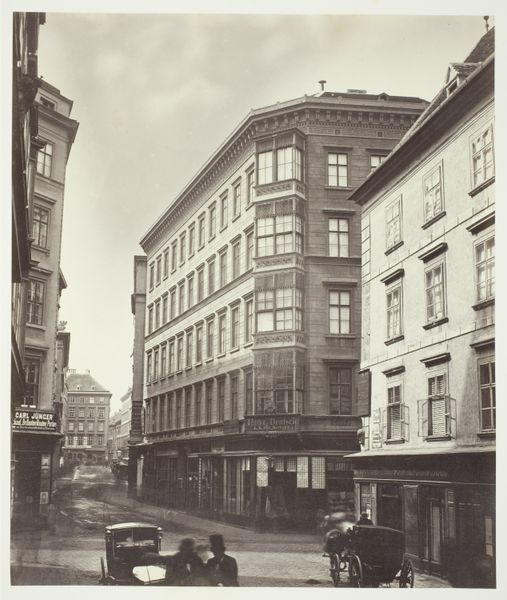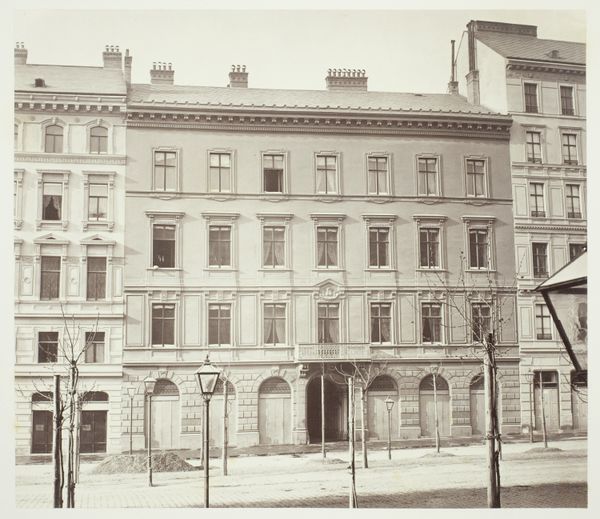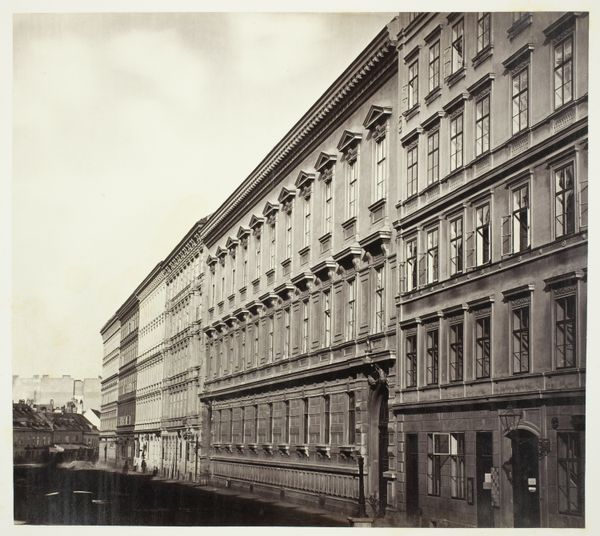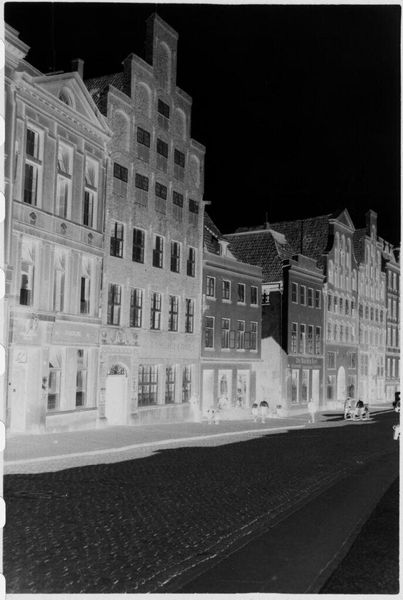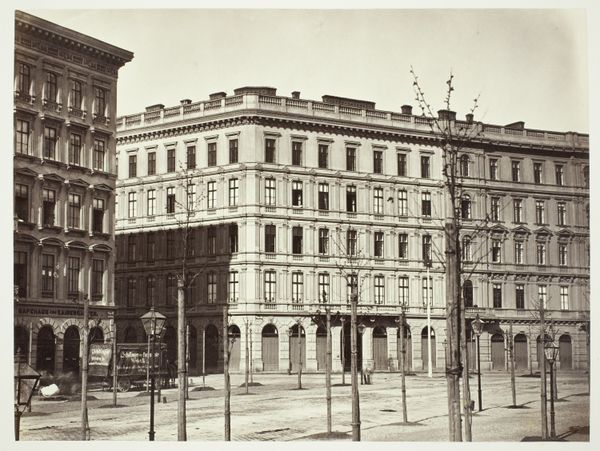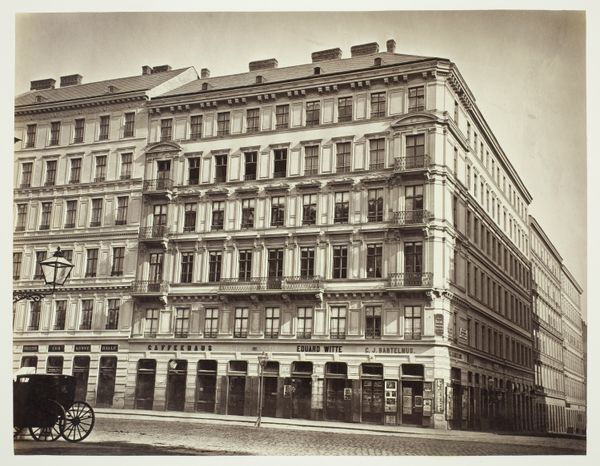
Dimensions: image: 463 x 569 mm
Copyright: © Thomas Struth | CC-BY-NC-ND 4.0 DEED, Photo: Tate
Editor: So, this is Thomas Struth's "Salzmannstrasse, Leipzig 1991," a black and white photograph. It's a street scene, quite somber. I am intrigued by the numerous antennas and the overall sense of decay. What strikes you most about this image? Curator: The photograph, a product of its time, reflects the transition in Leipzig post-reunification. Note the architecture and the presence of the automobiles, manufactured goods representing consumption patterns shifting. Consider the labor involved in both the construction and now the maintenance, or lack thereof, and what is revealed about the economic realities of the time. Editor: That's a great point. I hadn't really considered it as a document of economic change through the materiality of the buildings and objects. Curator: Exactly. It’s not just about aesthetics, but the social and economic processes embedded within the photograph itself and its production. Editor: This has completely changed how I see the image. Thanks!
Comments
tate 8 months ago
⋮
http://www.tate.org.uk/art/artworks/struth-salzmannstrasse-leipzig-1991-p20156
Join the conversation
Join millions of artists and users on Artera today and experience the ultimate creative platform.
tate 8 months ago
⋮
Thomas Struth began taking photographs of industrialised cities when he was studying under Bernd Becher (born 1931) at the Düsseldorf Academy in the late 1970s. He has continued to explore and develop the theme for almost twenty years, focusing his attention on such cities as New York, Tokyo, Berlin and Naples. Since the mid 1980s he has also produced landscapes, portraits and photographs of visitors in museums. Struth's images of the urban environment concentrate on seemingly unspectacular streets and public spaces. He seeks to record the face of urban space, seeing the architectural environment as a site where a community expresses its history and identity. In interviews he has stated that his images aim to explore what public spaces 'might say about the people who live in these sites.' (Quoted in Gisbourne p.5.) In recording the urban environment, Struth deliberately refers to the tradition of black and white documentary photography, adopting a seemingly objective position. The compositions are simple and the photographs are neither staged nor digitally manipulated in post-production. Struth has said: 'for me it is more interesting to try and find out something from the real than to throw something subjective in front of the audience.' (Quoted in Minelli p. 190.) However, in spite of a link to the reportage tradition, Struth avoids both its snapshot approach and its quest for the capture of a fleeting, spontaneous image. Rather he carefully selects the sites where, using long exposures he makes sharply focused images. In 1991, two years after the unification of East and West Berlin, Struth began working on an extensive series of images that sought to record the face of the former East Germany, (of which Tate owns five). He travelled the country, taking photographs in a variety of cities which had previously been inaccessible from the West. In Salzmannstrasse, Leipzig 1991 he employs techniques which have characterised his street scenes since the 1970s. Struth places the camera in the centre of the street at eye level, creating a vertiginous one-point perspective that leads the viewer's eye past the severe nineteenth century apartment buildings to the end of the street. Rows of windows punctuate the bleak facades, the uniformity of the scene only interrupted by such details as television aerials, a satellite dish and a cloth banner hanging from a window at the end of the street. A few empty cars are parked in the road. Struth avoids all human activity and incident so that the deserted street appears like an empty stage-set. The central focus of the image is an empty space. The image has a melancholic atmosphere of absence, a mood which is enhanced by the neutral grey light of early morning that bathes the scene. The slightly shabby East German world that Struth depicts is one in which time is presented as having stood still. It is a world that is at once recognisable, but also alien because it had been hidden from Western eyes for forty years. The uninflected image gives no hints as to how it is to be interpreted, and the viewer is led to linger over what might otherwise seem an un-noteworthy, everyday vista. As Struth has said, his work is intended to 'give pause', and thus resist immediate consumption. He seeks to bring about a 'move to investigative viewing' which is also a 'call to interact.' (Quoted in Buchloh p.31.) Further Reading: Mark Gisbourne, 'Struth', Art Monthly, no.176, May 1994, pp.3-9Giovanna Minelli, Another Objectivity, exhibition catalogue, Centre National des Arts Plastiques, Paris 1989, pp.189-194Benjamin Buchloh, Portraits: Thomas Struth, exhibition catalogue, Marian Goodman Gallery, New York 1990Thomas Struth: Strangers and Friends, exhibition catalogue, Institute of Contemporary Art, London 1994, reproduced p.66 Imogen Cornwall-JonesJuly 2001
